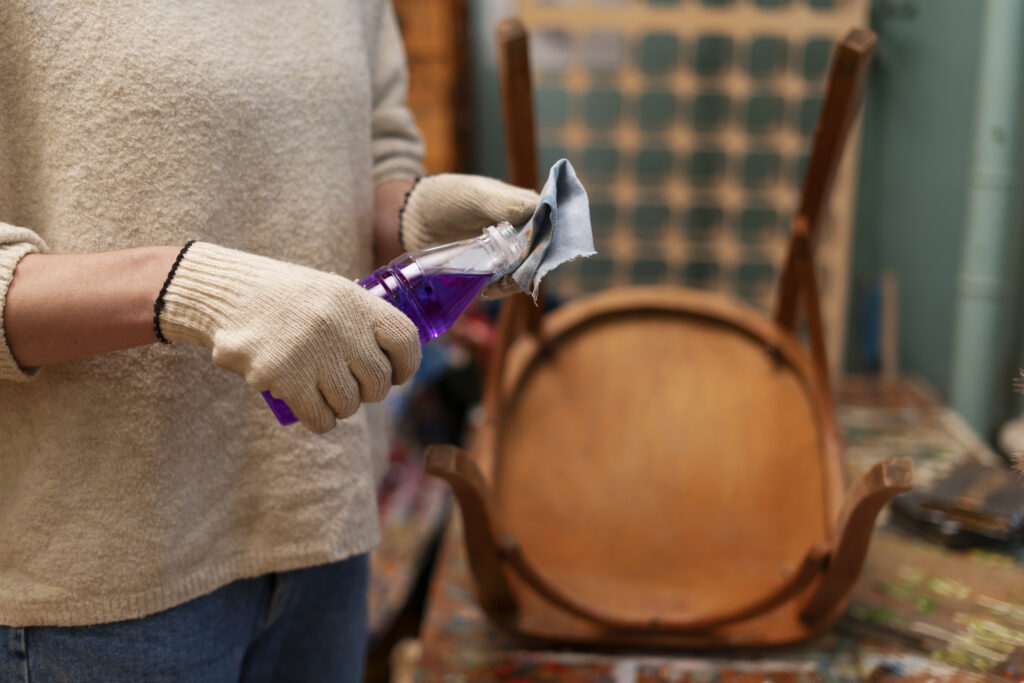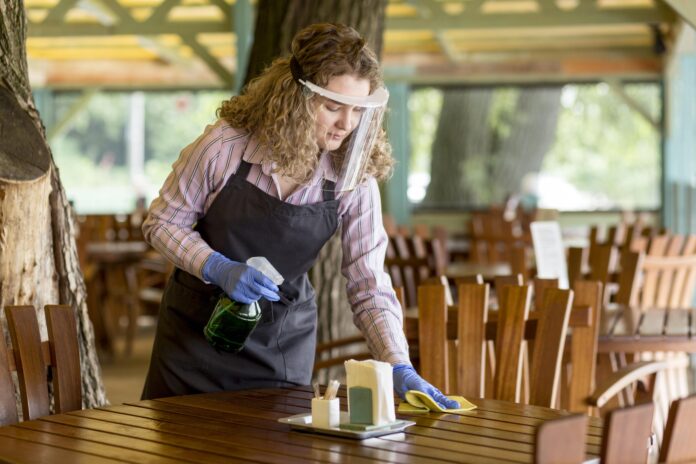Introduction
- 1. Why Outdoor Furniture Maintenance is Important
- 2. Preparing Your Outdoor Furniture for Re-Staining
- 3. Choosing the Right Stain for Outdoor Furniture
- 4. Applying the Stain
- 5. Sealing and Protecting Your Outdoor Furniture
- 6. Ongoing Maintenance Tips for Outdoor Furniture
- 7. Common Mistakes to Avoid When Re-Staining Outdoor Furniture
- Maintaining Stained Furniture: Best Practices for Longevity
- Conclusion
Properly maintaining stained furniture is crucial for keeping your outdoor pieces looking fresh and extending their lifespan. Outdoor furniture faces constant exposure to weather, so regular outdoor furniture care is essential. This guide covers all you need to know about cleaning, re-staining, and protecting your furniture from the elements. By following these maintenance tips, you’ll keep your furniture beautiful and resilient, ready for use season after season.
1. Why Outdoor Furniture Maintenance is Important
Outdoor furniture is exposed to sunlight, rain, humidity, and temperature fluctuations, all of which can damage wood, cause fading, and lead to rot or mildew. Proper maintenance not only keeps your furniture looking great but also protects the wood, extending the life of your pieces and preventing costly repairs or replacements.
2. Preparing Your Outdoor Furniture for Re-Staining
Proper preparation is key to ensuring that the stain adheres well and provides a smooth, long-lasting finish. Here are the essential steps:
Cleaning the Surface
Before you can re-stain, it’s important to remove any dirt, mildew, or grime that has built up on the surface.
- Mild Soap Solution: Combine a small amount of mild dish soap with warm water in a bucket. Gently scrub the furniture using a soft brush or sponge for a thorough clean.
- Rinse Thoroughly: Make sure all soap residue is removed by rinsing the furniture with a hose or a damp cloth.
Removing Old Stain or Finish
If the old stain is peeling or uneven, it’s best to remove it before applying a new coat.
- Sanding: Use medium-grit sandpaper (80-120) to remove the old stain and smooth the wood surface. Sand in the direction of the wood grain to prevent unwanted scratches and ensure a smooth, even surface.
- Power Washing: For larger pieces with peeling stains, a gentle power wash can help remove old finish. Use a low setting to avoid damaging the wood.
3. Choosing the Right Stain for Outdoor Furniture
Selecting the right stain is crucial for outdoor furniture. Look for stains that are specifically designed for outdoor use to ensure durability.
Types of Stains
- Oil-Based Stains: These stains penetrate deep into the wood and provide excellent water resistance and UV protection. Oil-based stains are ideal for furniture exposed to heavy rain or direct sunlight.
- Water-Based Stains: Known for quick drying times and low VOCs, water-based stains are a more eco-friendly option. They are resistant to mold and mildew, making them suitable for humid environments.
4. Applying the Stain
Applying the stain correctly is essential for a smooth, even finish. “Follow these step-by-step instructions to achieve a polished, professional finish.”
Tools You’ll Need
- Paintbrush or foam brush
- Lint-free cloth or sponge
- Stir stick (for mixing the stain)
Test the Stain
Before applying the stain to the entire piece, test it on a small, inconspicuous area of the furniture. This helps ensure the color and finish are what you’re looking for.
Apply the First Coat
Using a paintbrush or foam brush, apply the stain evenly along the wood grain. Work in sections to avoid overlap marks, and make sure each area is thoroughly coated.
- Tip: Don’t overload the brush with stain, as this can lead to drips. Use a lint-free cloth to gently remove any extra residue.
5. Sealing and Protecting Your Outdoor Furniture
For extra protection against the elements, consider applying a clear, UV-resistant sealer on top of the stain.
- Outdoor Polyurethane or Spar Varnish: These sealers are specifically designed to handle outdoor conditions and help prevent fading, cracking, and moisture damage.
- Application: Apply the sealer in thin, even coats with a paintbrush. Allow each coat to dry completely, and lightly sand between coats for a smooth finish.
Sealing adds durability to the stain and helps protect your furniture against harsh weather.
6. Ongoing Maintenance Tips for Outdoor Furniture
Re-staining may be needed every 1-2 years, but regular maintenance can prolong the life of your furniture.
Cleaning and Dusting
Dust and clean your furniture every few weeks, especially during pollen season. Use a damp cloth or a soft brush to keep the surface clean and prevent dirt buildup.
Covering During Off-Seasons
If you live in an area with harsh winters, consider storing or covering your outdoor furniture during the off-season. Waterproof furniture covers protect against moisture, debris, and UV rays.
7. Common Mistakes to Avoid When Re-Staining Outdoor Furniture
To achieve the best results, avoid these common mistakes:
- Skipping the Sanding Step: Sanding ensures the stain adheres properly and results in a smooth finish. Skipping it can lead to blotchiness and uneven color.
- Applying Stain in Direct Sunlight: The heat can cause the stain to dry too quickly, resulting in streaks. Apply stain on a cool, overcast day if possible.
- Not Wiping Excess Stain: Leaving excess stains on the surface can make it sticky and uneven. Always wipe away any excess stains for a smooth, professional finish.
Maintaining Stained Furniture: Best Practices for Longevity

Maintaining stained furniture requires regular cleaning, protection from the elements, and occasional re-staining to keep it looking vibrant and protected. Outdoor pieces face harsh conditions, including UV rays, rain, and temperature changes, so maintaining a care routine can make a big difference in their durability and appearance.
Tips for Proper Outdoor Furniture Maintenance
- Clean Regularly: Dust and wipe down your furniture weekly to remove dirt and prevent buildup. Use a mild soap solution and a soft brush for more thorough cleaning.
- Apply Protective Sealers: To add extra protection, apply a weather-resistant sealant over the stain every year. This helps shield the furniture from UV damage and moisture.
- Re-Stain When Needed: Re-staining every 1-2 years refreshes the color and offers renewed protection. Sand the surface lightly before applying a fresh stain layer for best results.
Conclusion
With proper maintenance and re-staining, your outdoor furniture can remain a beautiful, functional part of your outdoor space for years to come. By following these steps—preparing, staining, sealing, and maintaining—your furniture will be well-protected against the elements. A little time and effort go a long way in preserving the look and durability of outdoor wood furniture, allowing you to enjoy your investment for seasons to come.














